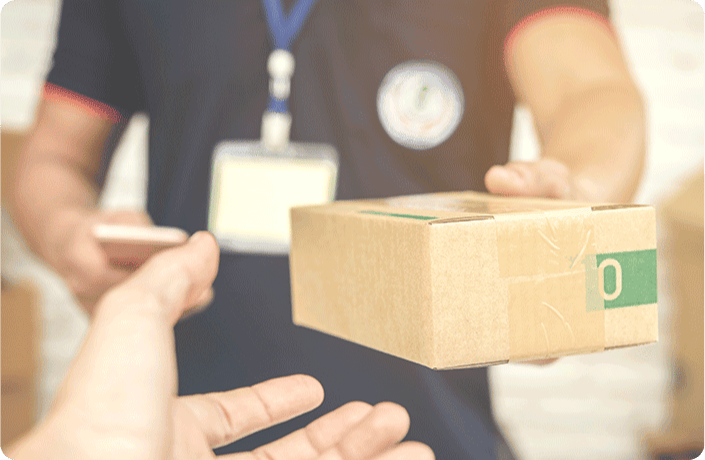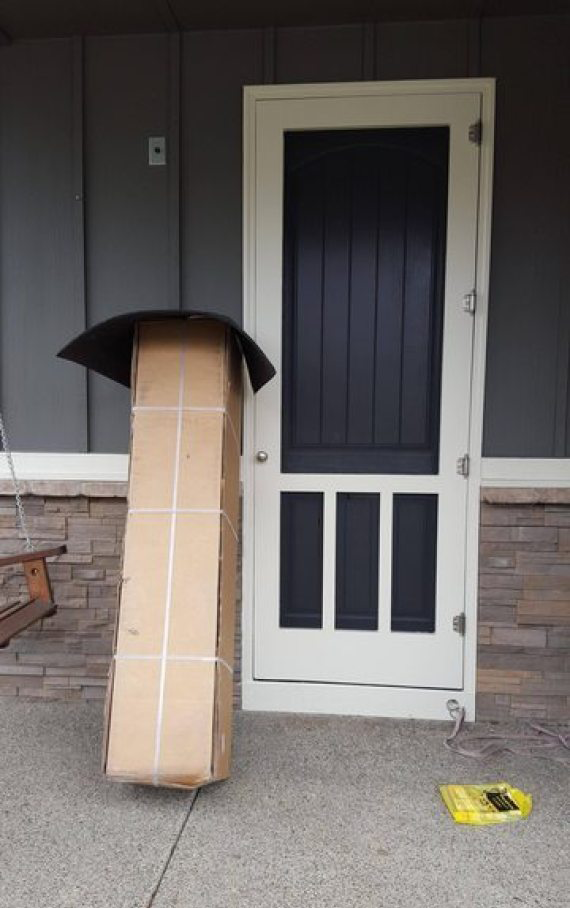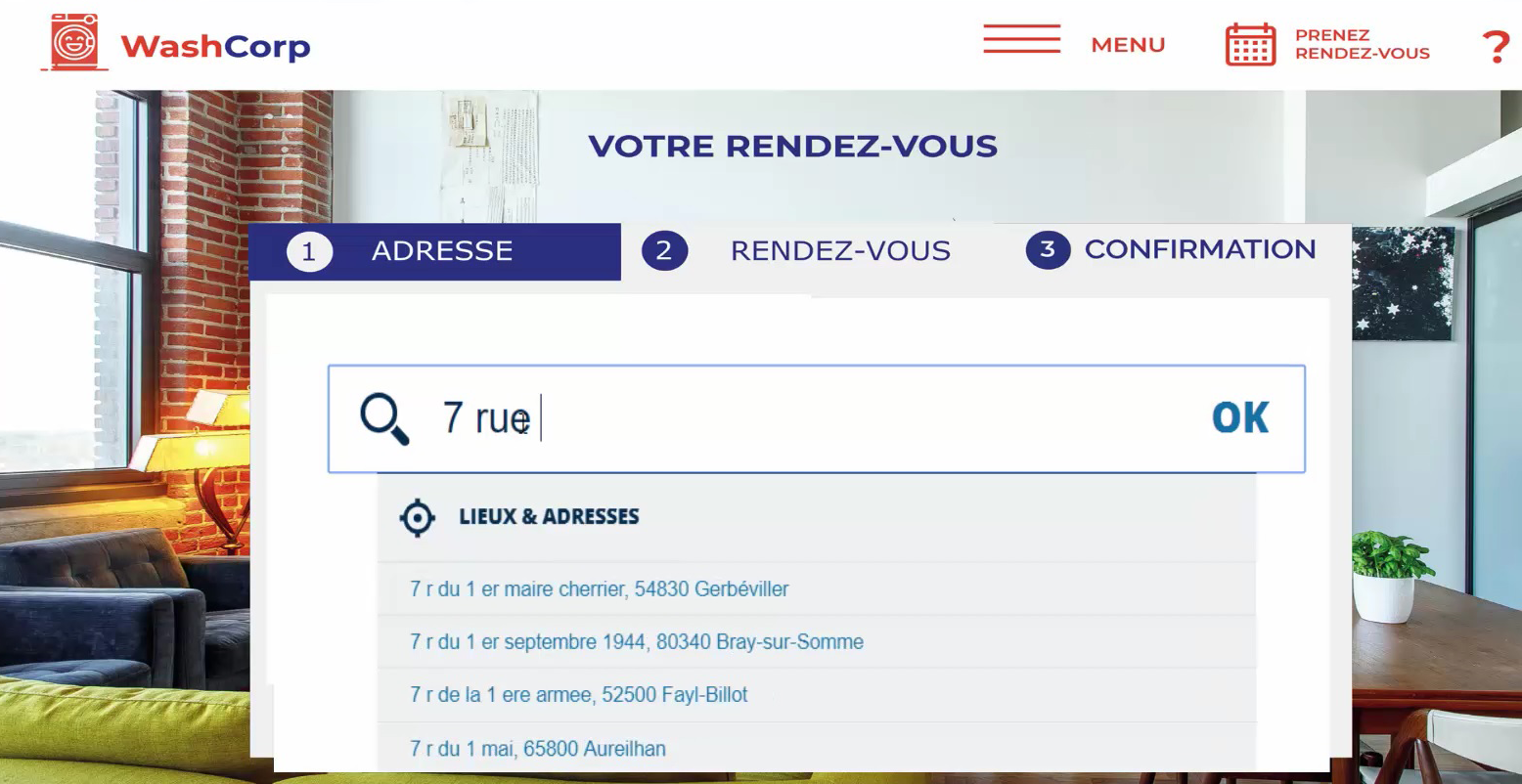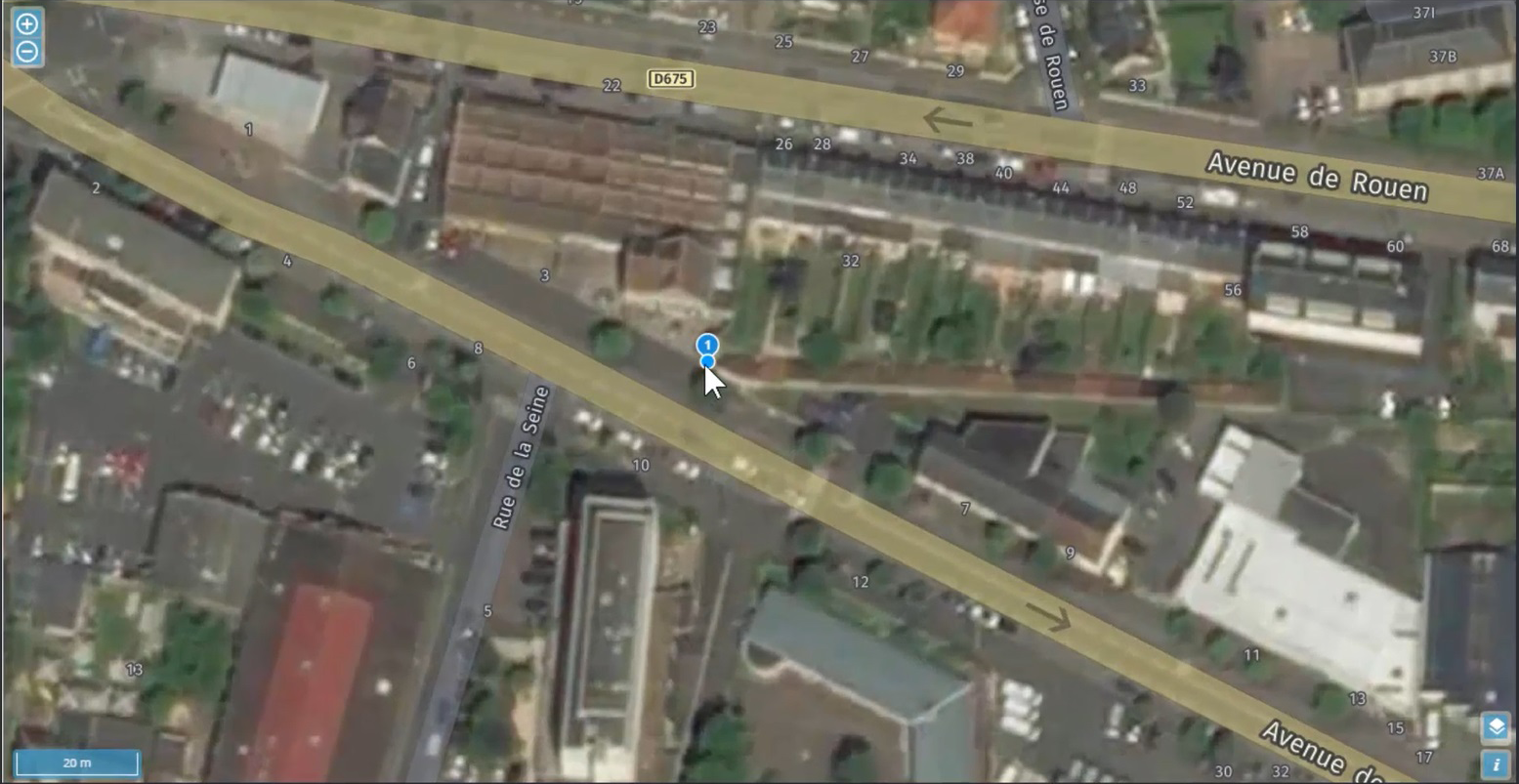Aiming for «100% first attempt delivery success»: the last mile logistics challenge

In 2016, the Huffington Post published an amusing anecdote about a particular home delivery: an e-commerce customer had requested a home delivery, knowing he would not be at home. He requested the shipment was left under the doormat outside his front door. The driver obeyed the instructions to the letter, taking care to place the package underneath the mat, even though the former was over one metre in length!While the article purchased may not always correspond to the object as imagined by the customer, the vital point for the shipper would have to be that, according to a FedEx employee, if delivery instructions are not respected and a customer complaint follows, a 290-dollar fine might be forthcoming…
.png?width=570&name=o-LIVREUR-FEDEX-570%20(1).png)

Up to 40% first attempt failure
This story is a useful illustration of the many difficulties encountered daily by drivers, and for that matter by every technician or professional delivering packages or even services to an individual’s home address. There are a host of variations on this theme of practical stumbling blocks to achieving smooth and perfect fulfilment, from the bemused driver seen standing in a quandary outside the entrance of an apartment block for which he has no entry code, to the postman trying to get through to a customer on the interphone of the same block trying to deliver a registered letter, or again a van observed driving hopelessly around and around an industrial park trying to find the designated company or building…
An address may be impossible to find, a or it may have been inaccurately recorded, with wrongly transcribed access codes or telephone numbers, customers may be absent or unreachable, blocks of flats may be impossible to access without direct contact with the consignee, who needs to be physically present for some reason or other, parking may be difficult or impossible… All these examples go some way to explaining why the first attempt to deliver to a customer’s place of residence is quite likely to be unsuccessful, with a failure rate ranging from 10-40%(1).
For agents in the logistics sector providing a service to end customers, a delivery that is unsuccessful first time around clearly incurs extra costs: the delivery will have to be rescheduled, the customer will have to be kept informed, the delivery must be included in a future delivery round at a date that suits all parties, in the hope that next time around a delivery can successfully be concluded… For the transporter, first attempt failure therefore means:
- More miles travelled and greenhouse gases emitted before finally being able to deliver, and an increased risk of customer dissatisfaction …
- Penalties falling to the charge of e-commerce players for non-respect of terms and conditions, and late delivery to end customers…
- Even slimmer margins since despite the fact that the last mile market is in full expansion and drivers and those loading strive to secure the capacities they need, price and delivery timescale are highly competitive.
Home delivery figures are set to rise
The exponential rise in home deliveries is the corollary to the way consumer profiles and patterns are changing and, notably, of the fast rising uptake for e-commerce by the average consumer. This fact is borne out by statistics for consumer purchasing trends in France, where monthly figures show for each successive quarter of the year, that demand is growing constantly: according to the Observatoire des usages Internet de Médiamétrie, in the 1st quarter of 2019, 38.8 million people in France (that is, 88.2% of internauts) had already made a purchase online at least once in their life – as against 36.6 million (82.7% of internauts) two years earlier (T1 2017).
That the proportion of individuals buying online is going up is a matter apart, but the real impact on logistics of late is the higher frequency with which customers place orders, and for an ever-decreasing total order value:
| 2013 | 2014 | 2015 | 2016 | 2017 | Variation 2013-2017 | |
| Average number of purchases online per customer and per year | 18 | 20 | 23 | 28 | 33 | +83% |
| Average total of an online order | 84€ | 81€ | 78€ | 70€ | 66€ | -21% |
| Annual expenditure per purchaser | 1515€ | 1625€ | 1780€ | 1960€ | 2178€ | +44% |
Source : Fevad (Fédération e-commerce et vente à distance), Key Figures 2014, 2015, 2016, 2017, 2018.
We observe, in other respects, that the proportion of internauts who purchase online at least once a month rose from 58% in 2016 to 65% in 2917 (+12%). There is nothing to indicate that this trend will be tailing off over the next few years, and all the more so since:
- Subscriptions such as those to Amazon Prime, that include free delivery in 1 working day for an unlimited number of orders, are enjoying huge success with customers and this kind of offer is encouraging them to place multiple orders. In 2018, 34% of those buying online stated they had subscribed to a delivery service of this type (Fevad). This has resulted in a proliferation of small sized parcel deliveries.
- Free delivery or lower cost delivery to a pick-up point such as a ‘parcel shop’ or depot, offered by an increasing number of e-commerce service providers, also helps fuel the proliferation in numbers of orders and packages.
Nevertheless, and in spite of the arrival of more diverse delivery options and the constantly rising demand, delivery to the home (or workplace) generally remains the preferred solution for consumers:
| 2013 | 2014 | 2015 | 2016 | 2017 | Variation 2013-2017 | |
| Home deliveries | 80% | 83% | 86% | 85% | 88% | +10% |
| Delivery to a pick-up point | 57% | 66% | 68% | 85% | 86% | +51% |
| In-store collection | 23% | 26% | 25% | 36% | 38% | +65% |
| Delivery to a casier/consigne | 1% | NC | 8% | 11% | 12% | +1200% |
Source : Fevad (Fédération e-commerce et vente à distance), Key Figures 2014, 2015, 2016, 2017, 2018.
The consequence of this fast-evolving market trend is that the number of parcels generated by e-business has risen from 450 million in 2015 to 505 million in 2017, translating into an increase of 12% (Fevad). In Europe, even though this only represents – depending on the country – 5-10% of retail trade (excluding food products), e-commerce now accounts for 20-30% of the total number of deliveries in the city (27% in Île-de-France). We could soon be seeing figures similar to those in New York – the French Post Office, a major player in last mile logistics, estimates that «the volumes of parcels linked to e-business and delivered in the city is due to carry on rising by about 7% per annum» for some years yet(2).
Seen in this context, there are likely to be more and more problems with home deliveries in the coming years, and this is increasingly forcing local and regional authorities to take action and obliging last mile professionals to search for solutions to optimize their routes and drastically reduce their first delivery attempt failure rate.
What actions can be taken to reduce the first attempt failure rate?
E-commerce providers have now taken on board the utility of developing alternatives to home delivery: consignment systems, pick-up points at specially designated ‘parcel shops’ or depots with guaranteed accessibility, reducing the number of one-off, more costly, deliveries to individuals that not only incur extra cost but carry most risk of first attempt delivery failure.
While these alternatives facilitate the work of delivery personnel, individual deliveries remain an essential part of their daily activity and improving profitability for their activity is possible if we tackle the two main causes of failure for home deliveries:
- Inadequate quality and precision of delivery address information at the disposal of the driver (geolocation, accessibility). It has been suggested that «one in two non-deliveries to individual customers is due to a false or incomplete address, incorrect or absent contact details such as telephone number or email address, an unexpected access code, needed to gain access to an apartment block and not provided in the details given, usually for security reasons… Then there is always the case of the internaut themselves not being at home at the time»(1).
- The difficulty of managing a system whereby a dialogue can take place between the shipper and the customer about which timeslots suit them, when they have to be present in person because of the size of a consignment or if a ‘live’ signature is required to confirm delivery.
Technological solutions exist to moderate this second cause of failure. It is, for example, possible to link the consignee into a scheduling programme whereby they commit to a date and time, so while assuming more responsibility they also feel more in control: they are invited to choose one or more times from a limited series of delivery timeslots that have, importantly, been optimized beforehand. This means that time windows suggested have already been calculated to take into account available resources (number of vehicles and drivers) constraints (working hours, capacity…) and the overall work load. Nomadia distributes this type of solution for some of the largest e-commerce players. Have a look, for example, at how C Chez Vous deploys our solutions: C Chez Vous, subsidiary of the Groupe CASINO, optimizes home deliveries for CDISCOUNT products.
The question of the quality of recorded information obviously has to be a priority and sorted out well ahead of delivery. Access to autocomplete and address validation services on the e-commerce website will swiftly eliminate the larger part of the risk to the extent that the customer is only permitted to enter a known address – that is to say, an address that can be geocoded and, therefore, exploited by route calculation and optimization tools used by transporters, as well as by the GPS and routing apps or assistants used by transporters.
If the address entered by the customer is not present in the system’s database (for example, because it has only recently been created) Nomadia offers geographic services for finding the precise address and correcting it if need-be on the route map.


100% success rate for first attempt deliveries? Yes, it’s possible!
Having the exact address is not always enough to enable a transporter to arrive right outside the door or beside the customer’s private letterbox. Shippers who record the lowest first delivery attempt failure rates are those who, from the outset, systematically contact customers expecting deliveries to make sure that all the information required by the transporter (mobile phone number, building floor number, access code, parking availability, special instructions…) have been supplied, and are present and correct.
Companies successfully improving on their failure rate, or even achieving a «zero failure rate» for first delivery attempts, do so for a good reason: they will only embark on a delivery operation that is certain to be achievable, in view of the information obtained from the customer. Such an approach, of course requires additional resources. But the additional costs incurred (in managing a dialogue with the customer, for example) has to be weighed against the substantial savings per mile in fuel and time spent to achieve the objective – and let’s not forget the added bonus of improved customer satisfaction ratings when goods arrive on time, in time, and under optimum conditions for all parties concerned: e-commerce service provider, transporter, courier, end customer.
(1) DURAND B., MAHJOUB S. and SENKEL M.P. (2013), La livraison des internautes urbains : la mutualisation des derniers kilomètres est-elle si performante ?, French Industrial Management journal, Vol. 32, N°4, pp. 93-108.
(2) Terra Nova, Des marchandises dans la ville – Un enjeu social, environnemental et économique majeur, June 2017.
